Where to Eat Like a Local Through the Castle Towns of Segovia
By Hester van HensbergenSegovia is a province of juxtapositions. The vast open plain is constantly interrupted by sharp ravines, craggy rockfaces, and castle towns that spiral tightly upwards. Its long, harsh winters give way abruptly to fierce summers beneath scorching blue skies. Culinarily, it’s famous for long unctuous lunches of milk-fed lamb and suckling pig, but this overlooks the abundance of excellent snacks and modest meals on offer, from chorizo-stuffed buns to churros and cauldrons of bean stew. To avoid the fate of Laurie Lee, who wandered through village after village in the summer of 1935 and could only muster “a piece of goat’s cheese as hard as stone,” here is a guide to enjoying the best of them.
Churros at La Tropical
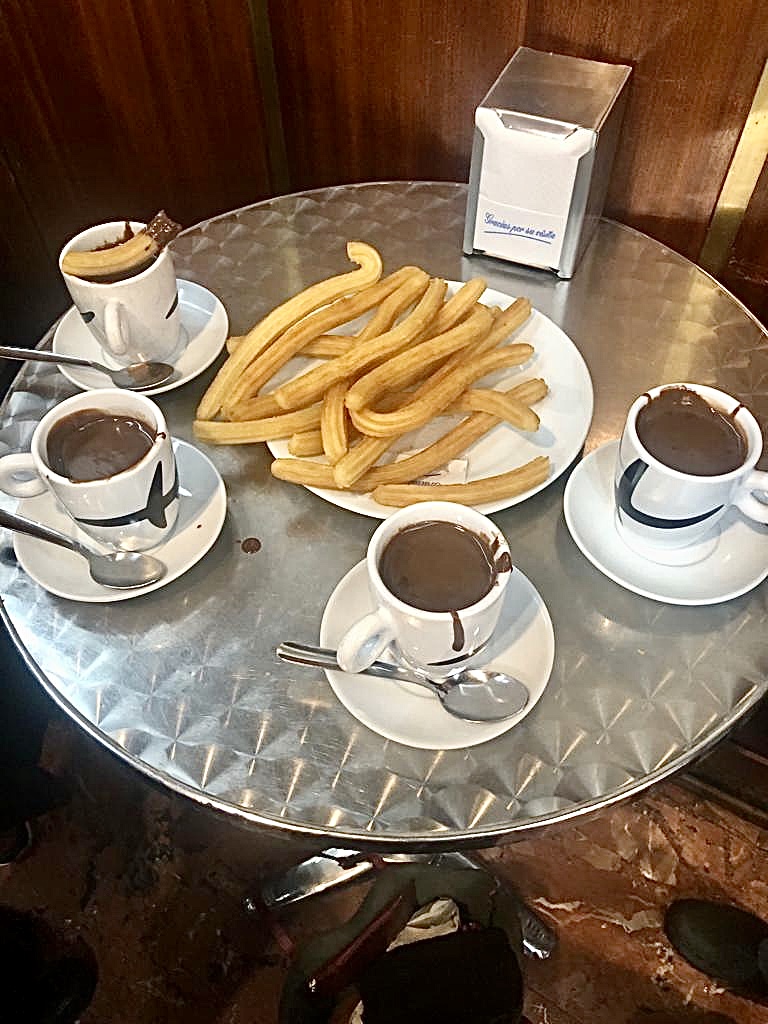
Start a morning in Segovia wandering in the cool shade of the Aqueduct’s monumental granite arches. Judge for yourself whether such a feat could only have been achieved with the help of the devil, as legend has it. Then enjoy a selfie with the city’s controversial new statue, a piece so ugly that it’s beautiful: horned satan himself, naked, grinning and wielding an iPhone at the Roman architectural masterpiece. That should have worked up an appetite, so head towards the Calle Real, a snaking alley that streaks up through the city towards the Plaza Mayor. The contents of this central vein are constantly shifting – the old stationary shop is shut down; gastronomic gift shops proliferate – but Bar La Tropical remains unchanged. Open since the 1930s and still run by the same family, brothers Paco and Carlos Velasco have been stewarding the bar in waistcoats and black tie for over thirty years. Stop for hefty quarters of salty tortilla, sweet milk soaked baguette (torrijas), and long curls of churros with coffee, hot chocolate or fresh orange juice.
Russian Salad at La Concepción
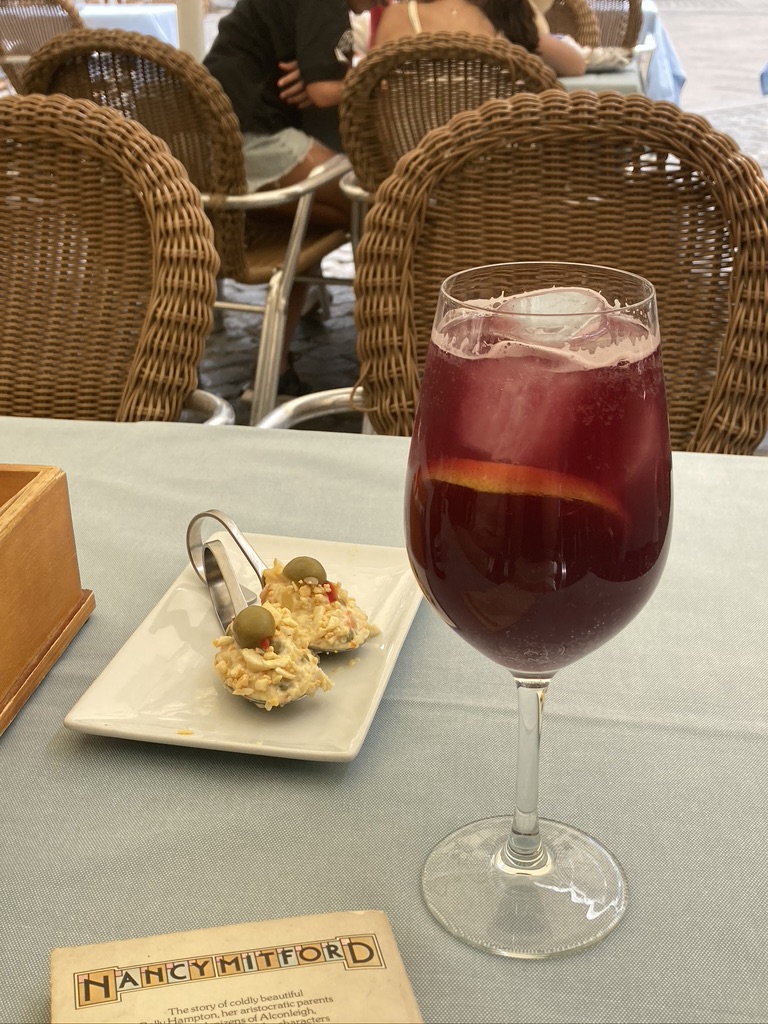
For gazing at the gothic cathedral and people watching, sit on the terrace of La Concepción (known as La Concha to Segovians), in the Plaza Mayor. Though the faded red velvet banquettes, mirrored walls, and black lacquer façade suggest at least a century of life, La Concha has only been open since 1978, when it was set up by friends from the city’s art school. The bars founding moment – a time of artistic flourishing, raucous parties, and tremendous national optimism in Spain’s transition to democracy – anchors its enduring charisma. Order drinks, observe the life of the plaza, and settle in for a while. While the devoted queue for the cathedral, your worship only requires you to wait on a steady stream of glasses and tapas until you hit the jackpot with the Russian salad. This is a trip back to the seventies too: a creamy, salty scoop on a silver spoon, frosted with chopped egg and topped with an olive.
Pl. Mayor, 15, 40001 Segovia, Spain
Torreznos at José María
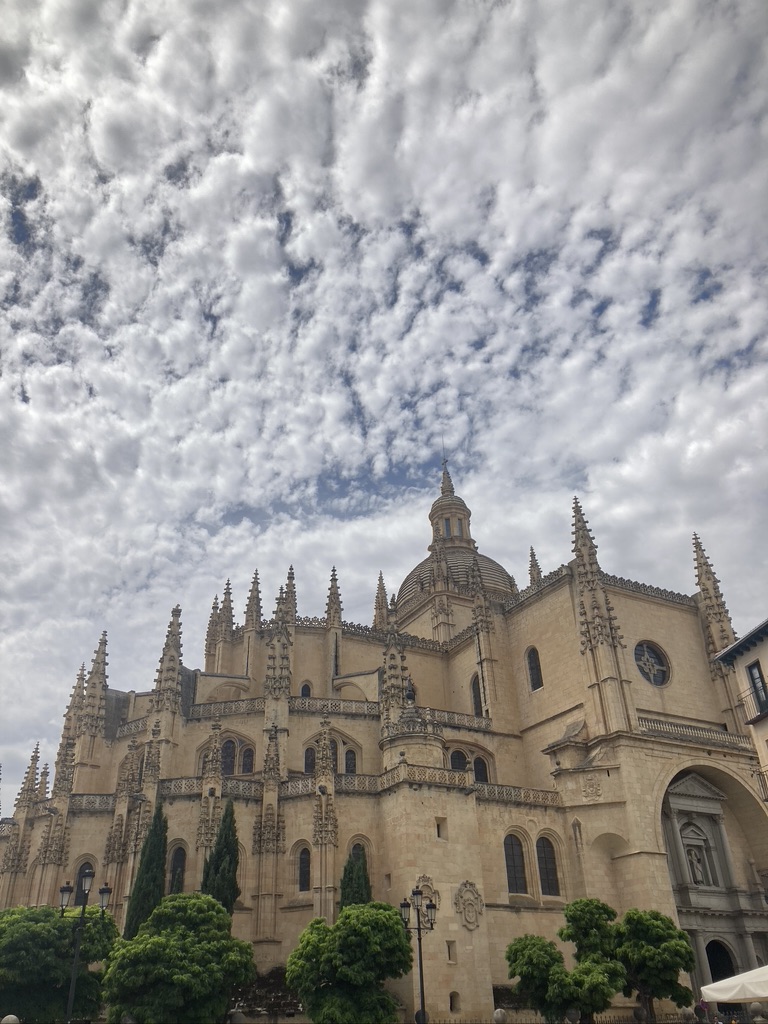
If La Concha represents artistic rebellion, José María just up the road is a more traditional Segovian institution. Lunch service is a pageant, with whole suckling pigs belly-flopped into terracotta dishes and served up at the table, often by a medal-laden José Maria himself, who cuts the tender flesh with the edge of a dinner plate. For a less theatrical and lighter meal, stop at the bar for a glass from one of the restaurateur’s own exceptional wineries, Ossian or Pago de Carraovejas, and a few raciónes (larger portions of tapas that you pay for). Try torreznos – glistening gummies of pigs’ belly, and morcilla – lush dark rounds of fried blood pudding with rice. Keep going with somewhere more unbuttoned but just as wedded to the Segovian tradition by heading round the corner to El Sitio just off the Plaza Mayor for its generous portions and reasonable prices. The house speciality is patatas revolcones, paprika mashed potato with more wobbling gelatinous towers of torreznos.
C. Cronista Lecea, 11, 40001 Segovia, Spain
Quail in Escabeche at Ventorro Villa-Rosa
Beyond the cathedral, towards the western edge of the city, lies the final punctuation point in Segovia’s skyline: its castle, the Alcázar, is a turreted medieval fantasy to feed the most vivid of imaginations. Avoid the crowds and follow the winding road down the rockface of the city towards the leafy banks of the Eresma river to view it from a quiet seat at Bar Ventorro Villa-Rosa. The suitably regal dish to order is the quail in escabeche, a silky but punchy brine of vinegar, wine, and olive oil scented with bay leaves and rosemary, that’s often used to preserve fish, small birds, or rabbit.
CL-607, 6, 40196 Segovia, Spain
Judiones de La Granja at Casa Zaca
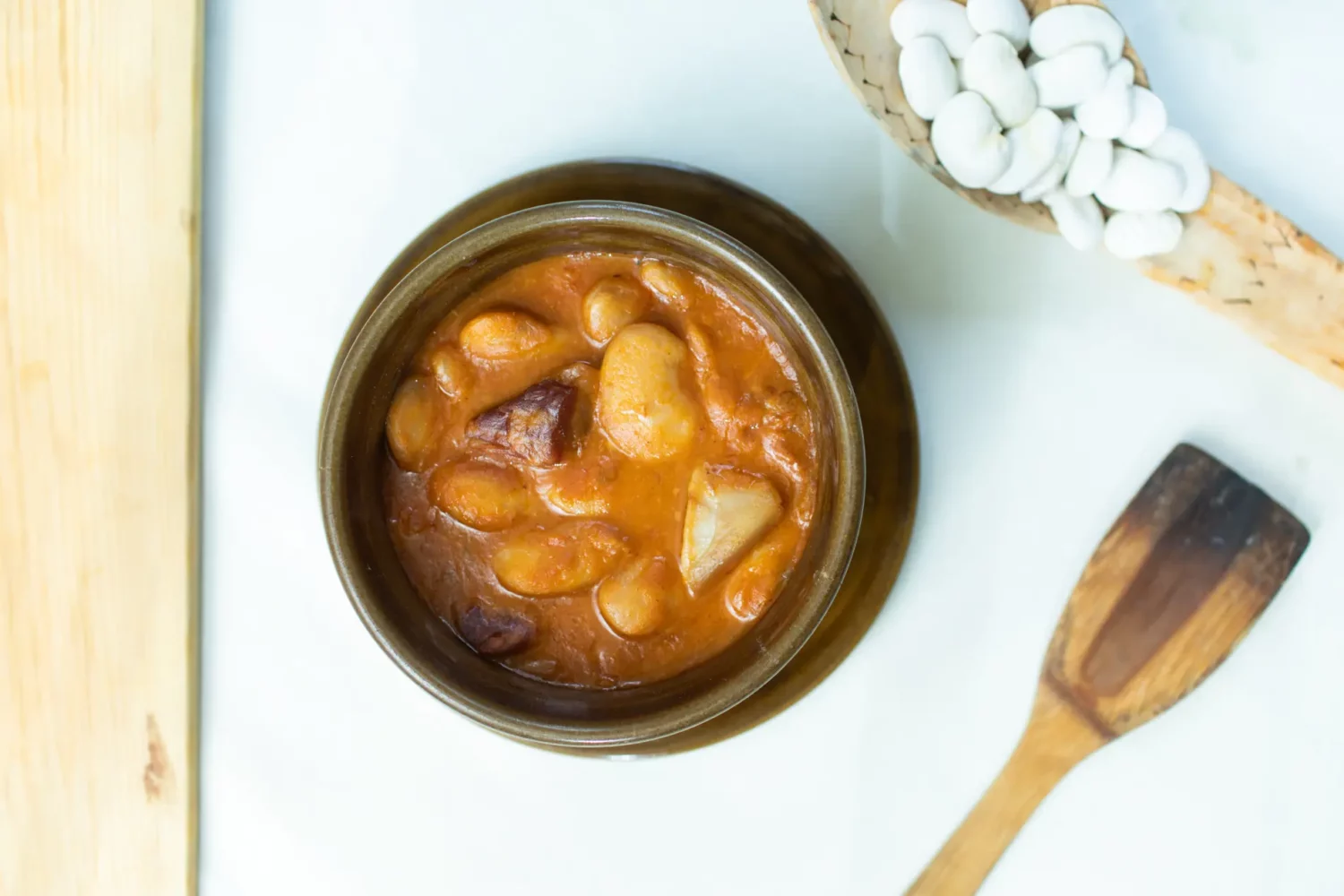
La Granja, or the Real Sitio de San Ildefonso, just to the southeast of Segovia is known for two things: On the one hand, there is the royal summer palace at its heart, with its collection of Renaissance tapestries and a delightfully frothy maize of gardens and fountains. On the other, there are some really big beans, judiones de la Granja. Perhaps surprisingly, the two are closely related: the palace was constructed in the 18th century for King Philip V of Spain, and modelled after his native Versailles; the beans, meanwhile, were brought from America and cultivated at the behest of his wife, Queen Isabella Farnese, who wanted them to feed her decorative pheasants. Since then, these engorged and velvety beans have become a favourite of humans too and a delicacy of the region, served in a vermillion stew, with chorizo, pigs’ ears and plenty of paprika. Visit La Granja for the late August fiestas, to join the crowds swimming in the palace fountains and eat judiones served up from vast cauldrons. The rest of the time, the restaurant to go to is Casa Zaca in the town centre, which has been serving the beans for over half a century. For those heading deeper into the national park for hiking or skiing, stop on the road in the hamlet of Valsaín for a bowl at Restaurante La Hilaria.
C. Embajadores, 6, 40100 Real Sitio de San Ildefonso, Segovia, Spain
Fried Eggs at Venta Pinillos
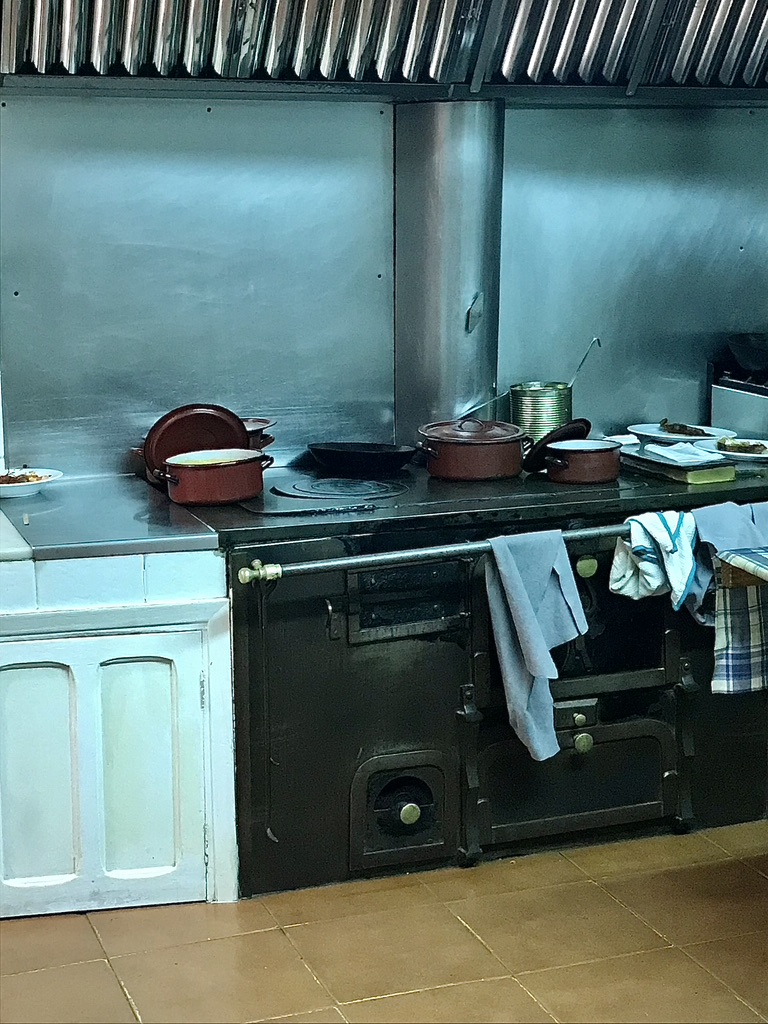
Whether it’s a return drive from winter sports in the mountains or hopping between the summer fiestas in the region’s villages, Segovians know the importance of refuelling on the road. Ventas – longstanding establishments offering hospitality to journeyers – come along reliably often, but for the fry-up of a lifetime there can be none better than Venta Pinillos on the north road out of Segovia. There are eggs fried until they are encircled by golden webs, thick-cut pork loin, and the best chorizo in the region, made just up the road in Cantimpalos, one of the most famous producing villages in Spain. Add triangles of soft white bread in a hard, pastry-like crust, plus house wine served in old oil bottles, and a meal at Venta Pinillos is enough to revive even the weariest traveller.
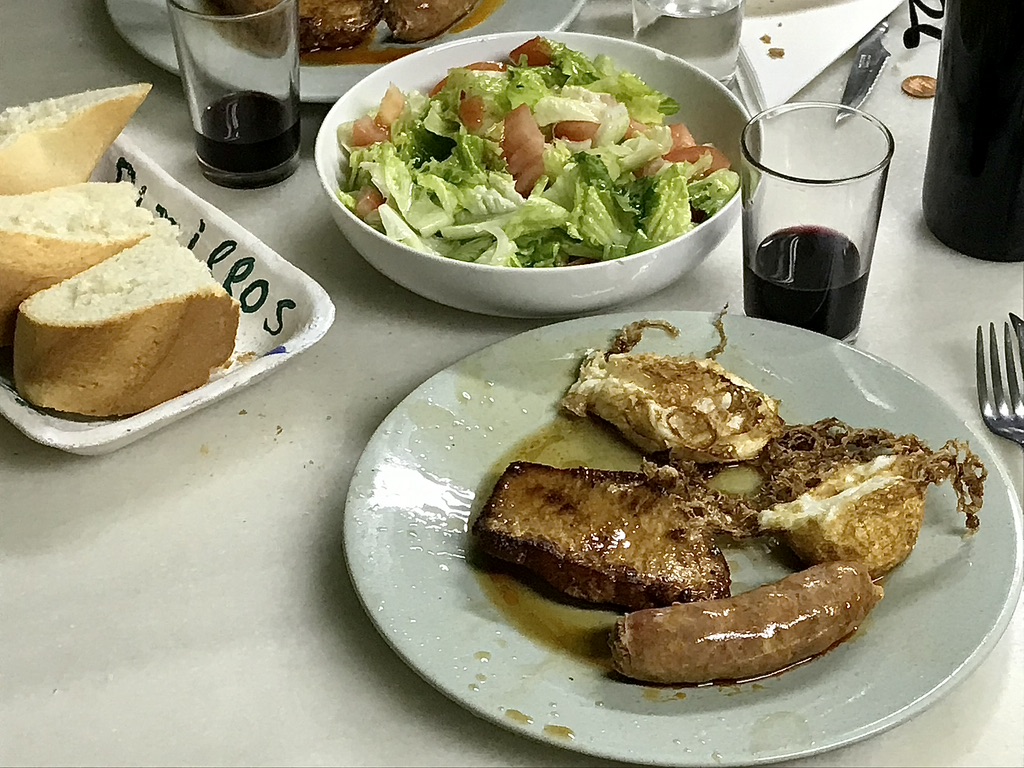
CL-603, 83, 40392 Pinillos de Polendos, Segovia, Spain
Tortilla at El Soportal
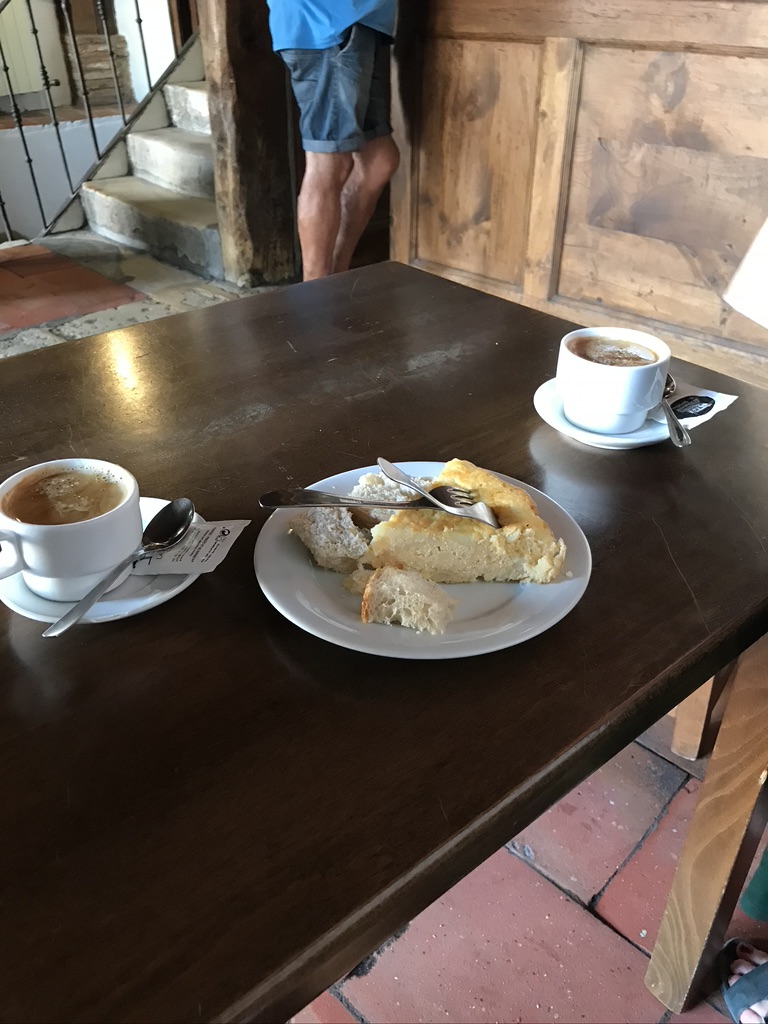
Among all the jewel-like Medieval fortress towns striking sharply up into the long Castilian horizon, Pedraza is a perfectly formed locket. Trace its circumference by foot in less than fifteen minutes, keeping an eye for eagles swooping through the valley below, and then stop in at the pewter shop before roaming the bakeries for a preñado, a small roll of bread impregnated with chorizo. Finally, settle onto a diminutive stool at El Soportal in the Plaza Mayor (which is miraculously transformed into a rickety wooden bullring each September), with a glass of vermouth or a coffee. Ordering the tortilla here can be unpredictable: it may result in a chunk the size of a baby’s face, or a morsel impaled on a cocktail stick, but its consistent in its quality, always just wet enough (contrary to its appearance in the photo above), and reliably, exceedingly salty.
Pl. Mayor, 7, 40172 Pedraza, Segovia, Spain
Empanada at Panadería De Sepúlveda
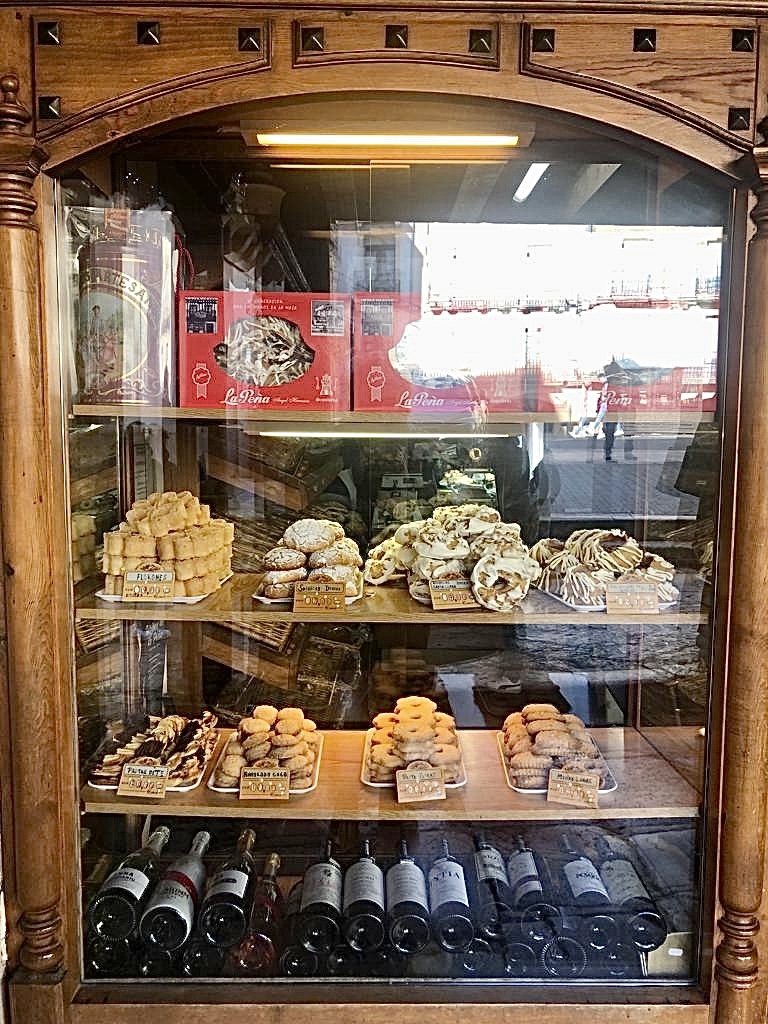
The lonely road winding north will eventually lead to the great rockface of Sepúlveda, bejewelled with stacks of neatly distinctive houses, guarded by circling vultures, and soundtracked daily by 33 gongs of the bell in the Plaza Mayor, which historically announced the walled town’s curfew and the closing of its seven entrances. Though famous for its milk-fed lamb, a summer visit warrants a different order to the day: coffee in the square; shopping for earthenware dishes and basketry at the top of Calle Sancho García; then lunch items to be brought at Pastelería La Peña and Panadería De Sepúlveda. Desserts first at the Pastelería, where there’s the pick of various sweet pockets of air and lard, including soplillos and mantecados, or the Ponche Segoviano, a decorative windowpane of marzipan, custard, and sponge. Then onto the Panadería for a square of tuna empanada, glossy pastry encasing a set of happy bedfellows in tomatoes, olives, and tuna. This is a picnic sturdy enough to survive the short drive to San Frutos – a 12th century hermitage that teeters over a ravine, at the bottom of which snake the shockingly azure waters of the river Duratón – as well as the steep (and officially off limits) descent to the water’s edge for a swim before eating.
Pastelería La Peña Pl. España, 20, 40300 Sepúlveda, Segovia, Spain
Panadería De Sepúlveda C. Bajada a San Esteban, 2, 40300 Sepúlveda, Segovia, Spain
Header image by Emilio Sánchez on Pexels.